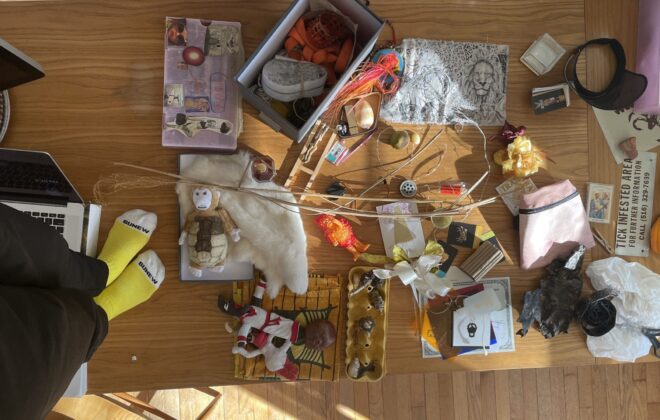An overdue update…
In the run up to last week’s presentation, I spent a fair amount of time researching the more actionable steps I had ahead of me, but breaking the production timeline down helped me focus on what I’d need to have in place in order to have something workable for this week’s Feedback Sessions. Even though I didn’t expect to have a substantial “audience” in place, I hoped to have a fully navigable space, even if just a sample. In looking for models I could use I was pretty pleased to find that there are some usable assets available online that I could import into a project to get kind of a proof-of-concept up working, but as I learned in Pierre’s Virtual Worlds class in January, there’s zero guarantee they’ll work as planned.
It bears mentioning that even though I said in last week’s presentation that I was leaning heavily toward using Unity, I thought about it a lot since then and decided I didn’t join IMA to play it safe (although I’d hardly describe my proficiency with Unity as “playing it safe”). Despite my challenges with coding and scripting, I wanted to challenge myself and use Unreal Engine instead. The similarities between the two are limited, but close enough to make me feel like I’ve got to try.
Currently I’ve got a few different project templates with different elements I’m going to combine to get the final product. Unreal comes with some pretty amazing starter content, including first- and third-person templates, but they are highly geared towards gaming – especially action and FP shooters. It’s taken a while with a few tutorials, but I now have a generic user avatar to move around the space that isn’t aiming a machine gun, so that’s a start.
As I mentioned above there’s plenty of places online where I’ve been able to find architectural models of theaters and performance spaces, but it can get pretty expensive to start buying up models without really knowing how to implement them effectively in Unreal, so I’ve found a free scan of the Madame Walker Theater, which was “3D scanned [and] re-constructed and textured by … using a variety of 3D editing software.” It’s a pretty big “get” for a free model, as I can imagine the amount of work that went into building it. I’ve got it in a separate project template, and despite a bunch of the requisite alerts in the error log, it looks like its supposed to, although navigating it with the avatar still hasn’t happened.
Finally, I’ve also found a really great source for the crowd behaviors, which I’m holding off on for the moment, but if they work properly, I might actually pee myself with excitement.
Related Posts
Leave a Reply Cancel reply
You must be logged in to post a comment.
Kat Sullivan
Adam Colestock
Helen (Chenuan) Wu
Christina Lan
Dorian Janezic
George Faya
Julia Myers
Kelsie Smith
Michael Morran
Po-Wen Shih
Liu Siyan
Fisher Yu
—
Craig Protzel
Christopher Wray
Haoqi Xia
Hayden Carey
Katherine Nicoleta Helén
Maria Maciak
Parisa Shemshaki
Sakar Pudasaini
Skyler Pierce
Steven Doughty
Yiqi Wang
—
Andrew Lazarow
Benoit Belsot
Enrique García Alcalá
Hongyi Zhang
Jay Mollica
Li Shu
Teddy (Jian) Guo
Monika Lin
Wenye Xie
Yiru Lu


